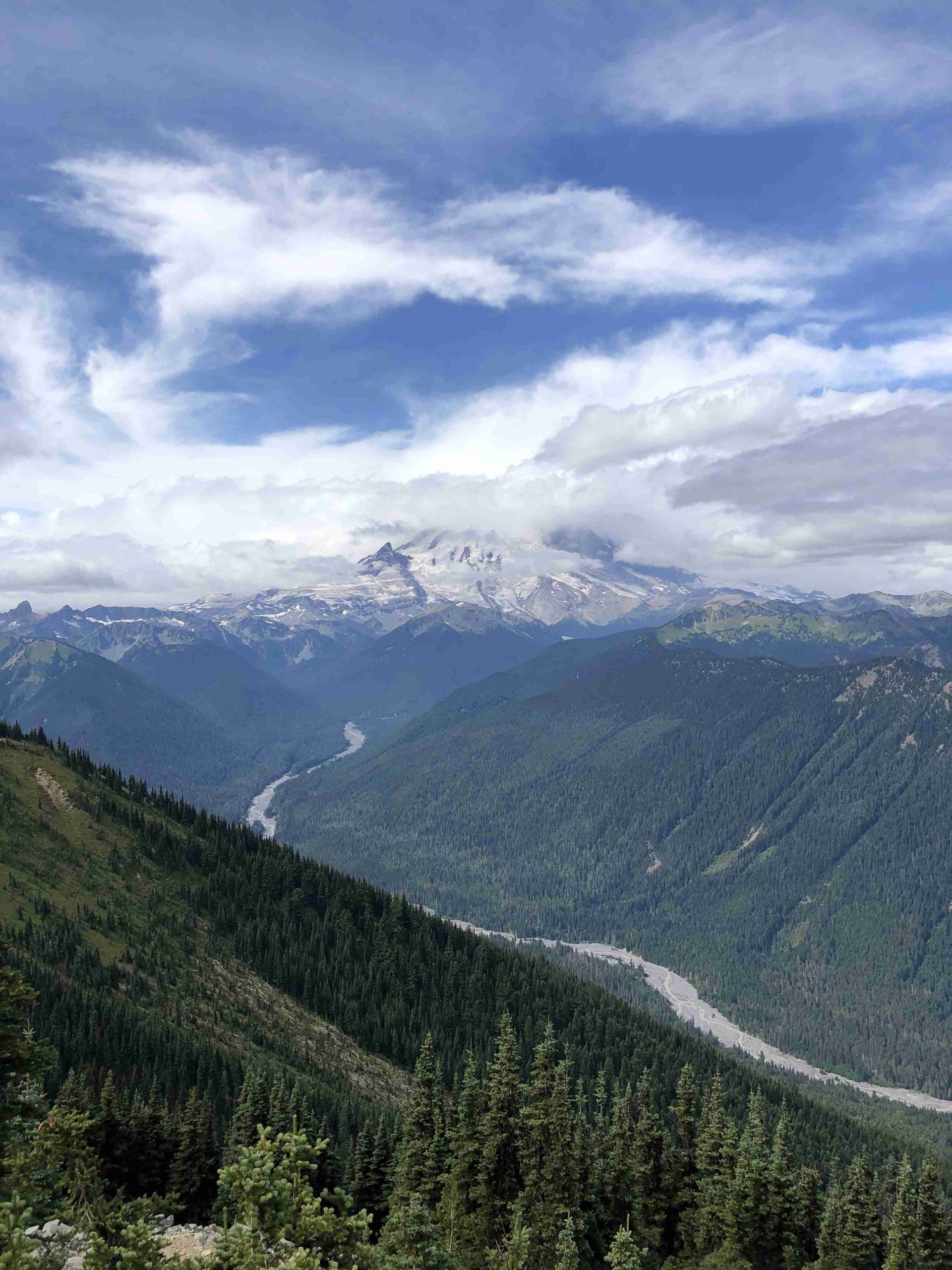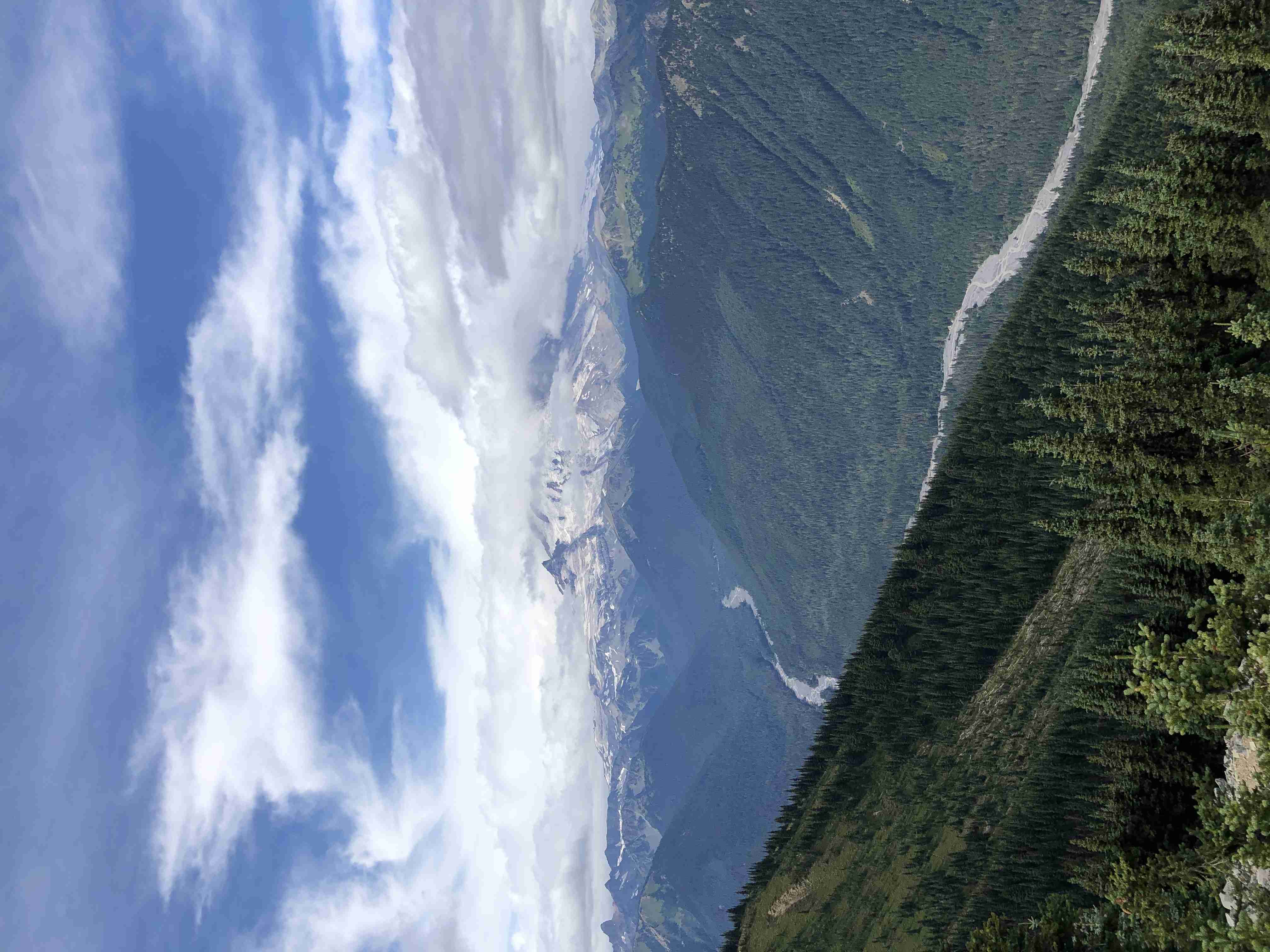Mount Rainier, an iconic peak in Washington State, offers diverse hiking experiences for adventurers of all skill levels. From easy walks through wildflower meadows to challenging ascents towards the summit, the mountain provides a range of trails and breathtaking views. This guide will help you prepare for your Mount Rainier hiking adventure, covering trail options, weather conditions, necessary gear, and safety precautions.
What Are the Best Hiking Trails on Mount Rainier?

Mount Rainier National Park boasts numerous trails catering to different skill levels and preferences. Here are some popular options:
Easy to Moderate Trails
- Naches Peak Loop
- Distance: 3.3 miles (loop)
- Elevation Gain: 600 feet
- Time: 2-3 hours
-
Trailhead: Tipsoo Lake parking lot
-
Bench and Snow Lakes Trail
- Distance: 2.4 miles (out and back)
- Elevation Gain: 600 feet
- Time: 1-2 hours
- Trailhead: Paradise Valley
Moderate Trails
- Skyline Loop Trail
- Distance: 6 miles (loop)
- Elevation Gain: 1,800 feet
- Time: 3-5 hours
-
Trailhead: Upper Paradise parking lot
-
Tolmie Peak Trail
- Distance: 5.6 miles (out and back)
- Elevation Gain: 1,541 feet
- Time: 3-4 hours
- Trailhead: Mowich Lake
Strenuous Trails
- Skyline Trail to Panorama Point
- Distance: 6.2 miles (out and back)
- Elevation Gain: 1,900 feet
- Time: 3-5 hours
-
Trailhead: Upper Paradise parking lot
-
Burroughs Mountain Loop
- Distance: 6-9 miles (loop)
- Elevation Gain: Up to 2,500 feet
- Time: 3-6 hours
-
Trailhead: Sunrise parking lot
-
Camp Muir
- Distance: 8 miles (out and back)
- Elevation Gain: 4,800 feet
- Time: 8-10 hours
- Trailhead: Upper Paradise parking lot
What Weather Conditions Should I Expect?

Weather on Mount Rainier can be unpredictable and varies significantly by season:
- Winter: Cold temperatures, heavy snowfall, icy trails, and avalanche risks
- Spring: Gradually warming temperatures, melting snow, and potential for rain
- Summer: Warmer temperatures, clearer skies, but still possibility of snow at higher elevations
- Fall: Cooling temperatures, increased precipitation, and potential for early snowfall
Always check current weather conditions before your hike and be prepared for rapid changes.
How Should I Prepare for My Mount Rainier Hike?
Essential Gear
- Sturdy hiking boots
- Layered clothing (moisture-wicking base layer, insulating mid-layer, waterproof outer layer)
- Rain gear
- Hiking poles
- Navigation tools (map, compass, GPS device)
- First aid kit
- Headlamp or flashlight
- Emergency shelter (e.g., bivy sack, emergency blanket)
Hydration and Nutrition
- Carry sufficient water for your planned hike
- Bring water purification methods for longer hikes
- Pack high-energy snacks and meals
Safety Measures
- Hike with a partner or group
- Inform someone of your hiking plans
- Carry the Ten Essentials:
- Navigation
- Headlamp
- Sun protection
- First aid
- Knife
- Fire starter
- Shelter
- Extra food
- Extra water
- Extra clothes
- Be aware of potential hazards (snow, ice, wildlife)
- Know your limits and turn back if conditions become unsafe
What Are the Elevation Gains for Popular Trails?
Understanding elevation gain is crucial for assessing trail difficulty. Here’s a breakdown for some popular trails:
| Trail Name | Total Elevation Gain | Steepest Sections | Notable Landmarks |
|---|---|---|---|
| Skyline Trail to Panorama Point | 1,900 feet | Ascent from Paradise to Panorama Point | Myrtle Falls, wildflower meadows, Panorama Point |
| Burroughs Mountain Loop | Up to 2,500 feet | Ascent from Frozen Lake to Burroughs Mountains | Frozen Lake, Burroughs Mountains |
| Camp Muir | 4,800 feet | Ascent from Pebble Creek to Camp Muir | Pebble Creek, Camp Muir (10,188 feet elevation) |
How Can I Minimize My Environmental Impact?
When hiking Mount Rainier, it’s essential to practice Leave No Trace principles:
- Plan ahead and prepare
- Travel and camp on durable surfaces
- Dispose of waste properly
- Leave what you find
- Minimize campfire impacts
- Respect wildlife
- Be considerate of other visitors
By following these guidelines, you help preserve the natural beauty of Mount Rainier for future generations.
Remember, hiking Mount Rainier requires careful planning and preparation. Always check current conditions, stay within your skill level, and be prepared to adjust your plans if necessary. With the right preparation, your Mount Rainier hiking adventure will be a memorable and rewarding experience.
References:
1. Earth Trekkers: 15 Epic Hikes in Mount Rainier National Park
2. Wheatless Wanderlust: Hiking In Mount Rainier National Park (For First Timers)
3. 57hours: Mt. Rainier’s 5 Best Day Hikes: The Spirit of Washington
